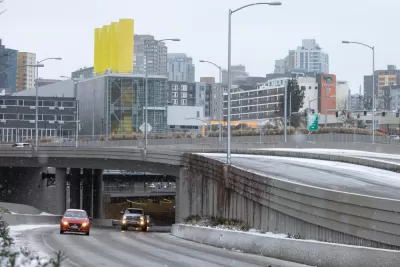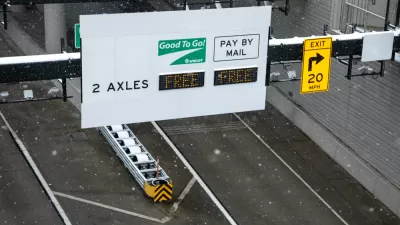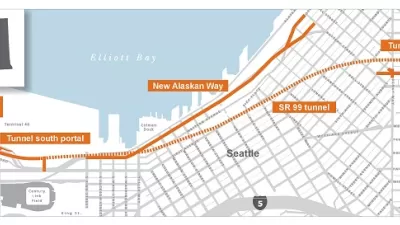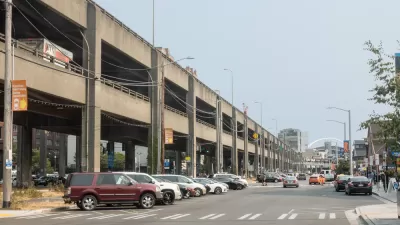Promises of congestion and thousands of cars spilling on to quiet residential streets proved unfounded after the first week with tolls on the Highway 91 tunnel in Seattle.

On Saturday, November 9, drivers had their first encounter with a toll plaza charging money for passage through the Highway 99 tunnel, the closely monitored replacement for the Alaskan Way Viaduct.
Jose Cortright checks-in with the Highway 99 project, finding predictions of "carmageddon" alarmist and immaterial. Cortright cites Google Map traffic conditions on a typical Tuesday as well as Tuesday, November 12, a few days after the tunnel opened, and finds free flowing traffic through both the tunnels and on surrounding streets.
Overall, if you compare these two pictures, it’s pretty clear that today’s traffic situation in downtown Seattle is much better than a typical day. Sure, Interstate 5, the freeway to the East of downtown Seattle is congested (as it is most late afternoon weekdays) But downtown Seattle streets, particularly on the west side of downtown are “green.” or free flowing. Overall, there’s a lot more “green” on Tuesday’s traffic charts than on a typical day. In other words: no gridlock or Carmaggedon here.
This isn't the first time predictions of traffic doom followed the Highway 99 project—similar predictions proved untrue when the Alaska Way Viaduct close before the new tunnel opened. And, according to Cortright, the Seattle example is not the only very recent example of the same narrative. The new bus priority granted on 14th Street in Manhattan saw the same predictions of overflow traffic on quiet side streets with the same result: relatively calm and flowing traffic conditions.
FULL STORY: Carmaggedon does a no-show in Seattle, again

Planetizen Federal Action Tracker
A weekly monitor of how Trump’s orders and actions are impacting planners and planning in America.

San Francisco's School District Spent $105M To Build Affordable Housing for Teachers — And That's Just the Beginning
SFUSD joins a growing list of school districts using their land holdings to address housing affordability challenges faced by their own employees.

The Tiny, Adorable $7,000 Car Turning Japan Onto EVs
The single seat Mibot charges from a regular plug as quickly as an iPad, and is about half the price of an average EV.

Seattle's Plan for Adopting Driverless Cars
Equity, safety, accessibility and affordability are front of mind as the city prepares for robotaxis and other autonomous vehicles.

As Trump Phases Out FEMA, Is It Time to Flee the Floodplains?
With less federal funding available for disaster relief efforts, the need to relocate at-risk communities is more urgent than ever.

With Protected Lanes, 460% More People Commute by Bike
For those needing more ammo, more data proving what we already knew is here.
Urban Design for Planners 1: Software Tools
This six-course series explores essential urban design concepts using open source software and equips planners with the tools they need to participate fully in the urban design process.
Planning for Universal Design
Learn the tools for implementing Universal Design in planning regulations.
Smith Gee Studio
City of Charlotte
City of Camden Redevelopment Agency
City of Astoria
Transportation Research & Education Center (TREC) at Portland State University
US High Speed Rail Association
City of Camden Redevelopment Agency
Municipality of Princeton (NJ)





























